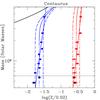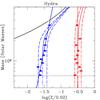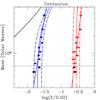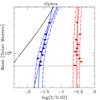Fig. 10
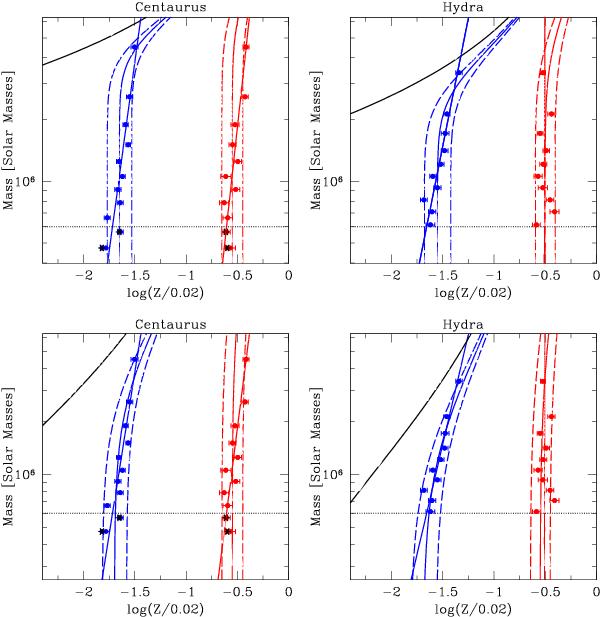
Model fits to our mass-metallicity data. Left: Centaurus. Right: Hydra. Compared to the model in Fig. 8, we include stellar evolution mass loss and dynamical mass loss according to Eq. (7), and then determine the best-fitting star formation efficiency. The dotted horizontal line represents the critical mass below which the clusters will undergo colour changes due to dynamical mass evolution. Below this line, asterisks indicate the data points without colour changes. Top panels: primordial half-light radius rh is fixed at 1 pc. We find best-fit star formation efficiencies of 0.65 for Centaurus and 0.50 for Hydra and pre-enrichment values of (− 1.65, − 0.55) for Centaurus and (− 1.55, − 0.50) for Hydra. Bottom panels: the mass-radius relation as in Eq. (9), normalised to a mean rh = 1 pc across the GC present-day mass range [5 × 105: 4 × 106] . We find best-fitting star formation efficiencies of 0.42 for Centaurus and 0.36 for Hydra, and pre-enrichment values of (− 1.70, − 0.55) for both Hydra and Centaurus.
Current usage metrics show cumulative count of Article Views (full-text article views including HTML views, PDF and ePub downloads, according to the available data) and Abstracts Views on Vision4Press platform.
Data correspond to usage on the plateform after 2015. The current usage metrics is available 48-96 hours after online publication and is updated daily on week days.
Initial download of the metrics may take a while.



